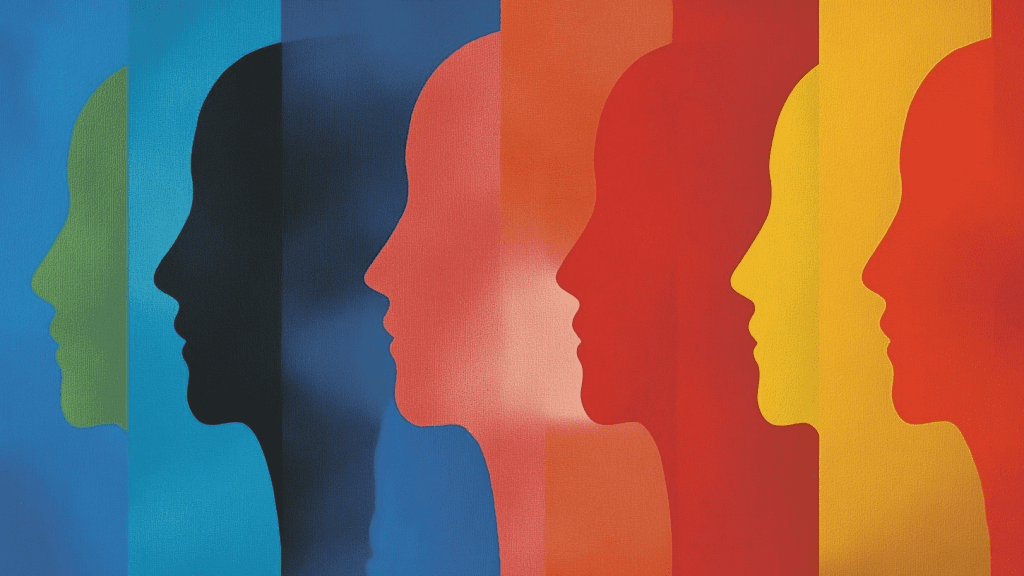Have you ever gazed at a breathtaking mountain landscape and noticed something hidden in plain sight? Perhaps you saw an eagle flying high above, or maybe a goat climbing the rocky slopes. Believe it or not, the animal you see in such an image might say something about how your brain works. This visual phenomenon isn’t just about your imagination; it’s a reflection of how your brain processes the world around you.
The Brain and Visual Perception

Visual perception is a fascinating blend of biology and psychology. Our brains are divided into two hemispheres: the right and left brain, each with unique functions and thought processes. What you see in an ambiguous image may depend on which side of your brain dominates your thinking.
Right-Brained vs. Left-Brained Thinking
- Right-Brained Individuals: People who are more “right-brained” tend to be creative, artistic, and intuitive. They excel at visual and abstract tasks, often seeing the bigger picture rather than focusing on individual details. If you’re more right-brained, your attention might be drawn to the hidden, flowing shapes in the image, like the curves of a goat blending into the mountain ridges.
- Left-Brained Individuals: Those who are more “left-brained” tend to be logical, analytical, and detail-oriented. They are often drawn to structured, clear forms. If this sounds like you, you may have immediately spotted the eagle, whose wings align with the angular peaks and sharp lines in the image.
Goat vs. Eagle: What Do You See?
Take another look at the image. What stands out to you first? Do you see the shape of a goat slowly making its way up the steep mountainside, or does the eagle with its wings outstretched in the sky catch your attention?
This phenomenon is called pareidolia, where our brains interpret random stimuli—such as clouds, mountains, or rocks—as familiar objects or shapes. The goat and eagle represent two common interpretations of the same visual cue, but what you see might reveal a bit about how your brain prefers to process information.
Seeing the Goat: Abstract and Creative Thinking
If the goat is more apparent to you, your brain may be leaning toward abstract interpretation. The goat’s shape is subtle, blending into the flowing lines and curves of the mountain. You might notice how its horns curve along the ridges, mimicking the natural bends of the rocky landscape. This suggests that your brain is processing the image in a holistic, less structured way, picking up on patterns and connections that aren’t immediately obvious.
Spotting the Eagle: Structured and Logical Thinking
On the other hand, if the eagle is what catches your eye, your brain might be more inclined toward structured thinking. The eagle’s wings are more clearly defined, formed by the sharp, angular peaks of the mountains, and its head may even seem to emerge from the clouds. This interpretation reflects a more detailed, organized approach, where your mind zeroes in on distinct shapes rather than abstract connections.
What Does Your Perception Say About You?

So, what does it mean if you see a goat or an eagle? While this is a fun exercise, it doesn’t strictly categorize you as a creative thinker or a logical one. In fact, all of us use both sides of our brain at different times, and your perception can shift depending on the context.
Still, the way we interpret visual cues can give us some insight into our thinking style. If you’re someone who tends to see patterns and abstractions in art, nature, or even everyday objects, your right brain may be more dominant. Conversely, if you often pick up on details and structure, your left brain might be taking the lead.
The Role of Pareidolia in Human Perception
Pareidolia isn’t limited to animals in mountain scenes. It’s a widespread psychological phenomenon where our brains detect familiar shapes in random objects. Think about the last time you saw a face in the clouds, a figure in the shadows, or a recognizable form in tree bark. Your brain is hardwired to seek out patterns, especially faces, even in the most unlikely places.
This tendency to see patterns can be traced back to our evolutionary past, where recognizing a predator or a friendly face from a distance could mean the difference between life and death. Our brains, eager to find meaning in visual stimuli, often make these associations automatically.
The Flexibility of Human Perception

One of the most interesting aspects of this optical illusion is how flexible human perception can be. With a slight change in focus, you might suddenly see the eagle after initially spotting the goat, or vice versa. This fluidity of perception shows that our brains are constantly adapting and reinterpreting the world around us.
It’s not just about whether you’re right-brained or left-brained; it’s about how dynamic our perception truly is. The same image can evoke different interpretations depending on mood, context, or even how long you’ve been staring at it.
Conclusion: Embrace the Beauty of Perception
At the end of the day, there’s no right or wrong answer. Whether you see a goat scaling the mountain or an eagle soaring through the sky, both interpretations are valid and equally intriguing. What this optical illusion reminds us of is the beauty of human perception—how a single image can reveal so much about the diversity of how we see and process the world.
Next time you’re hiking through the mountains or simply lying on your back watching the clouds, take a moment to observe the shapes and patterns you notice. What your mind reveals might surprise you!


